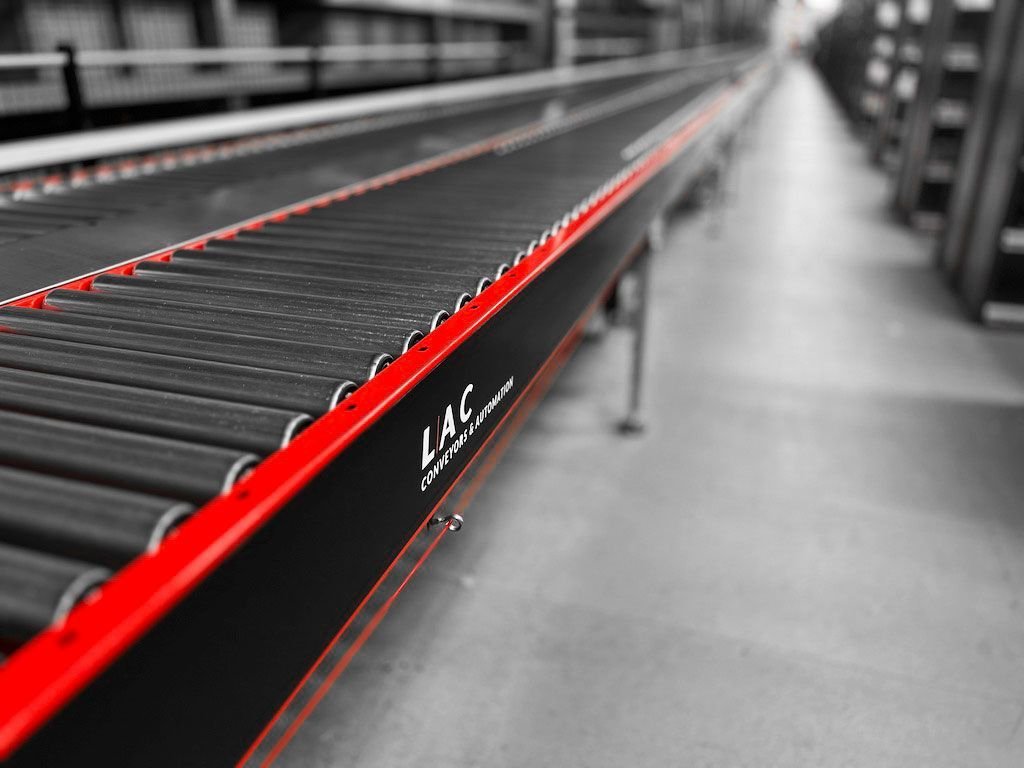The Role of Conveyor Automation in Sustainable Manufacturing
Sustainable manufacturing aims to minimise an operation’s environmental impact, conserve energy and natural resources, and ensure employee safety. Conveyor systems support these initiatives and contribute directly to sustainable manufacturing by enhancing efficiency, reducing waste, and promoting energy savings.
Here's a more detailed look at how conveyor systems contribute towards sustainable manufacturing:
Enhanced Energy Efficiency
Today’s modern conveyor belt systems are engineered with sustainability at their core. High-efficiency motors, intelligent drive systems, and lightweight yet durable components combine to minimise energy costs while maintaining high levels of product throughput. Some systems incorporate regenerative drives, which capture energy during braking and convert it into reusable power, helping to reduce net energy usage and support a greener future.
Automated conveyors also reduce reliance on forklifts and other fuel-based equipment, which can significantly lower emissions in industrial operations. Smart controls enable systems to power down during idle periods, increasing efficiency and reducing unnecessary energy consumption.
Modular conveyor systems further add value by providing scalable, reconfigurable solutions that evolve with operational needs. These innovative solutions align with business goals while reducing capital expenditure and environmental impact.
Reduced Material Waste
Precision and consistency are hallmarks of conveyor belt systems. By reducing manual handling, they decrease the likelihood of product damage, spillage, and misrouting. Integrated technologies such as vision systems and check-weighers help ensure accurate and consistent material flow, supporting quality assurance protocols.
This streamlined handling approach also reduces packaging waste, enhances material utilisation, and supports waste reduction efforts within industrial operations. Systems made from high-quality materials and designed for longevity minimise replacements and reliance on raw or non-recyclable materials.
Improved Workflow Efficiency
Conveyor automation significantly enhances the assembly process and overall production flow. Designed to move bulk products quickly and accurately, these systems reduce manual interventions, labour costs, and the risk of error.
With a proactive approach to layout design, manufacturers can avoid bottlenecks, ensuring a consistent and reliable production process. This leads to increased productivity with fewer resources, making conveyors an effective solution for sustainable material handling.
Improved Space Optimisation
Conveyor belt systems allow manufacturers to optimise existing floor space. They can transport materials vertically, overhead, or around tight corners, enabling scalability without facility expansion.
By avoiding the need for energy-intensive relocation or construction, businesses reduce overall carbon emissions and energy usage. Efficient use of space also leads to lower heating, cooling, and lighting needs, aligning with sustainability efforts.
Support for Circular Economy Practices
Modern conveyor systems are being designed with circular economy principles in mind. From design to disposal, these systems promote repairability, reusability, and the use of sustainable material. Many are made from aluminium and modular plastic - both eco-friendly materials that can be recycled.
Components like motors, belts, and rollers can be replaced individually, extending the life of the equipment and reducing waste. Such flexibility supports long-term use and further enhances commitment to sustainability in the conveyor belt industry.
Features and Benefits of Low-Energy Conveyors
Low-energy conveyor systems are at the forefront of sustainable conveyor solutions in the UK manufacturing sector. These systems offer several key advantages. High-efficiency drive systems help to lower electricity usage and significantly reduce operating costs. Their modular design makes it easy to upgrade components and extend the conveyor’s lifecycle, helping to minimise waste. Start/stop automation ensures that the system only runs when needed, effectively reducing unnecessary energy waste. Using lightweight materials helps to lower the power requirements on motors, improving energy efficiency. Additionally, low-friction components contribute to smoother operation and reduce wear and tear, cutting down on maintenance needs and part replacements.





